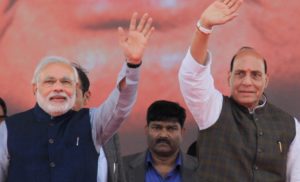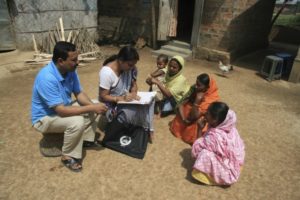Census operation 2021 to collect OBC data
India decides to count Other Backward Classes (OBC) for the first time in the Census to be held in 2021. Data will alter caste calculation and political programmes in Indian politics. Consequently, it will lead to a policy framework to suit the OBCs demand.
Eyeing greater political mobilisation of Other Backward Classes (OBC) ahead of the 2019 general elections, the ruling Bharatiya Janata Party (BJP) government has decided to include data collection on India’s majority community for the first time in the census operation to be conducted in 2021. The decision comes more than 25 years after the implementation of reservation for OBCs, based on the recommendations by the Justice BP Mandal Commission.
The Indian Constitution mandates reservations or quotas for socially-backward groups for providing access to education and employment opportunities in the state-run enterprises.
The decision to count OBC was taken at the high- profile meeting chaired by union home minister Rajnath Singh on August 31. Others who attended the meeting include minister of state (home) Kiren Rijiju, union home secretary Rajiv Gauba, Registrar General of India (RGI) Sailesh and senior officers of the office of the RGI and home ministry.
Why count OBC?
The decision will put an end to the longstanding demand from political parties to update the previous caste-based census conducted 87 years ago, in 1931, by the British.
Secondly, the decision comes in the backdrop of the government setting up a commission for the sub-categorisation of OBC, headed by the former chief justice of Delhi High Court, G Rohini, in October 2017. The committee has sought a third extension till November 2018 for submission of its report on creating quotas within quotas.
The previous UPA government had accepted the demand for caste-based enumeration and undertaken a Socio-Economic and Caste Census (SECC) in 2011. However, it has not been made public for “certain errors” identified by the RGI.
OBC-A significant force
OBC across India form least 41 pc as per the 2011 Census. Similarly, a survey by the National Sample Survey Organisation (NSSO) in 2007 put the OBC population in the country at 40.94 pc. But both these figures are lesser than the 52 pc quoted by the Mandal Commission report. The panel had arrived at the figure on the basis of the 1931 caste census by eliminating non-OBC communities from the total population.
So there has always been a demand from the community to include data collection in the census operation.
Political significance
Prime Minister Narendra Modi is himself an OBC leader from Gujarat. So this important electoral constituency cannot be ignored.
Also, for several decades, the political parties have only tried to attract scheduled castes and scheduled tribes who form about 17 pc of the Indian population.
Even the credit for BJP’ssuccess—with winning most of the seats in Uttar Pradesh and Bihar, in the 2014 Lok Sabha elections goes to attracting and appealing to the OBC. The success of BJP in the Assembly polls was also on account of its focus on the OBC.
With a grand alliance taking place among the opposition parties to unseat the Modi government, the BJP has been trying to consolidate its OBC base.
A major decision during recent weeks from the Modi government was granting constitutional status to the National Commission for the Backward Classes (NCBC) recently, on par with similar commissions for the scheduled castes (SCs) and scheduled tribes (STs).
Brewing discontent
All these decisions could turn out to be potential votecatchers for the BJP. However, it is easier said than done. With the 2019 Lok Sabha polls around the corner, the BJP is also battling major discontent among many dominant communities, such as the Jats in Haryana, Patidars in Gujarat and Marathas in Maharashtra among others, demanding reservation benefits in jobs across different states.
The government introduced a 10 pc quota for “economically backward sections” among forward castes. However, the Supreme Court struck this down in the Indra Sawhney vs Union of India case judgment in 1992, where it held that the Constitution recognised only social and educational—not economic— backwardness.
The overall reservation for SC, ST and OBC was capped at 50 pc. Based on the order, the Central government reserved 27 pc of seats in union civil posts and services, to be filled through direct recruitment for OBC.
Interestingly, the reservation in government jobs does not promise opportunities to millions of Indian belonging to socially backward classes/castes.
This is because the direct recruitment by the Central government ministries and departments in the country have plummeted to 15,877 in 2015 from 1,51,841 in the year 2013, marking a decline of 89 pc.
With no end to a caste-based reservation, all the political parties will continue to milk the caste calculus for their vested political interests.











